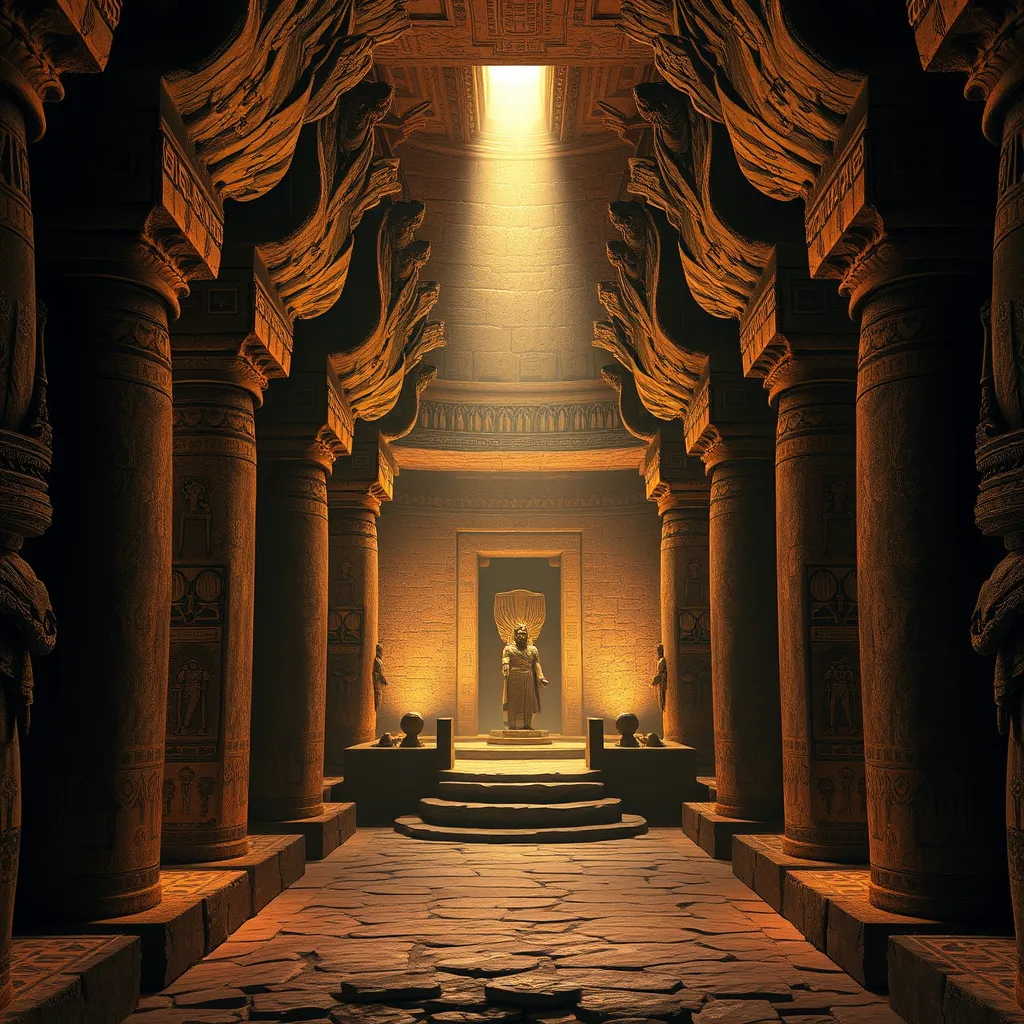The Duat: Exploring the Myths and Legends of the Egyptian Underworld
I. Introduction to the Duat
The Duat, often referred to as the Egyptian underworld, is a fascinating realm that held profound significance in ancient Egyptian belief systems. This mythical place is where souls would journey after death, representing not only a physical domain but also a metaphorical landscape of moral judgment and rebirth.
In the context of the afterlife, the Duat served as a transitional space where the deceased would navigate various challenges before reaching their final destination. Its importance is underscored by the elaborate rituals and texts created to guide souls through this mysterious realm.
II. Cosmology of the Duat
The structure of the Duat is complex, reflecting the Egyptians’ intricate understanding of the cosmos and the afterlife. It is often depicted as a vast, dark expanse filled with various regions, each with distinct features and challenges.
Key geographical features of the Duat include:
- Fields of Ialoo: A paradise-like area where the worthy could enjoy eternal bliss.
- The Lake of Fire: A treacherous body of water that symbolizes punishment for the wicked.
- The Hall of Judgment: The critical location where souls faced their fate.
Each of these regions is laden with symbolism, representing aspects of life, death, and the moral choices made during one’s earthly existence.
III. Deities of the Duat
The Duat is populated by various deities, each playing significant roles in the afterlife. Among the most prominent are:
- Osiris: The god of the afterlife, often depicted as a mummified king. He presides over the judgment of souls and embodies resurrection and regeneration.
- Anubis: The guardian of the dead, typically represented as a jackal. He oversees the embalming process and guides souls through the Duat.
- Ma’at: The goddess of truth and justice, who plays a crucial role in the Weighing of the Heart ceremony.
- Thoth: The god of wisdom and writing, who records the results of the judgment.
These deities reflect the values and beliefs of ancient Egyptian society, emphasizing the importance of morality, justice, and the afterlife.
IV. The Journey through the Duat
The journey through the Duat is a pivotal aspect of ancient Egyptian afterlife beliefs. Upon death, a soul embarks on a perilous journey where it encounters various trials and challenges, often symbolizing the struggles faced in life.
One of the most critical moments in this journey is the “Weighing of the Heart” ceremony, where the deceased’s heart is weighed against the feather of Ma’at. This ceremony determines the worthiness of the soul:
- If the heart is lighter than the feather, the soul is deemed worthy and granted passage to the Fields of Ialoo.
- If it is heavier, the soul is devoured by Ammit, the soul-eating demon, resulting in eternal oblivion.
This process emphasizes the central theme of morality in ancient Egyptian culture, illustrating the belief that one’s actions in life directly impact their fate in the afterlife.
V. Myths and Legends Associated with the Duat
Numerous myths and legends revolve around the Duat, with the story of Osiris being one of the most significant. Osiris’s death and resurrection symbolize the cyclical nature of life and death, representing hope for rebirth in the afterlife.
The Book of the Dead, a crucial text in ancient Egyptian funerary practices, provides spells and guidance for navigating the Duat. It illustrates the beliefs surrounding death and the afterlife, offering insights into the rituals and practices intended to ensure a successful passage.
In modern times, these myths have been reinterpreted in various ways, influencing literature, film, and art, and providing a rich source of inspiration for creators exploring themes of life, death, and the afterlife.
VI. Art and Symbolism in Duat Representations
The Duat has been depicted in various forms of ancient Egyptian art, showcasing its importance in the culture. These representations often include intricate murals, sculptures, and papyrus illustrations that convey the beliefs surrounding the afterlife.
Common symbols associated with the Duat include:
- The Ankh: Symbolizing life and immortality.
- Lotus Flower: Representing rebirth and purity.
- Scarab Beetle: A symbol of transformation and protection.
These symbols reflect the Egyptians’ views on life, death, and the afterlife, providing a deeper understanding of their cultural and spiritual beliefs.
VII. The Duat in Modern Culture
In contemporary culture, the Duat continues to influence various forms of art, literature, and entertainment. Its themes of life, death, and spiritual journey resonate with modern audiences, inspiring reinterpretations in diverse contexts.
Some notable influences include:
- Literature: Novels and stories exploring themes of resurrection and the afterlife often draw from Egyptian mythology.
- Film: Movies like The Mummy and Gods of Egypt depict elements of the Duat and its deities, albeit with creative liberties.
- Art: Modern artists incorporate symbols and motifs from the Duat, exploring its themes through contemporary lenses.
The enduring legacy of the Duat reflects humanity’s ongoing fascination with the mysteries of death and the afterlife.
VIII. Conclusion
The Duat holds a vital place in ancient Egyptian culture, representing not just a realm of the dead but a complex system of beliefs about morality, justice, and the afterlife. Its intricate cosmology, deities, and rich myths illustrate the Egyptians’ understanding of life beyond death.
As we reflect on the myths and legends associated with the Duat, we recognize their enduring legacy and influence in modern culture, reminding us of the universal questions surrounding existence and what lies beyond.





